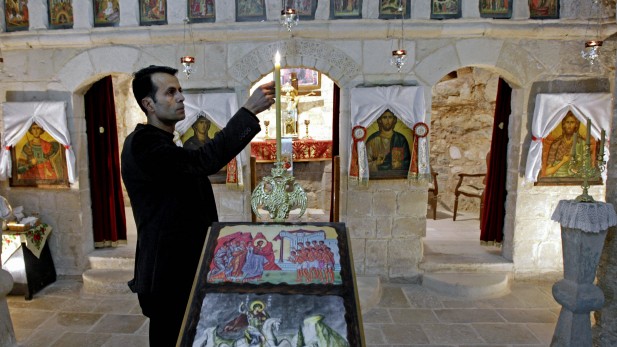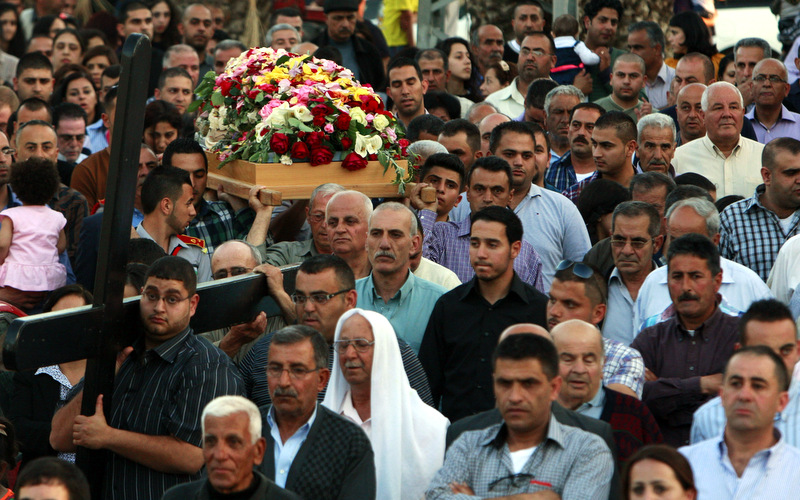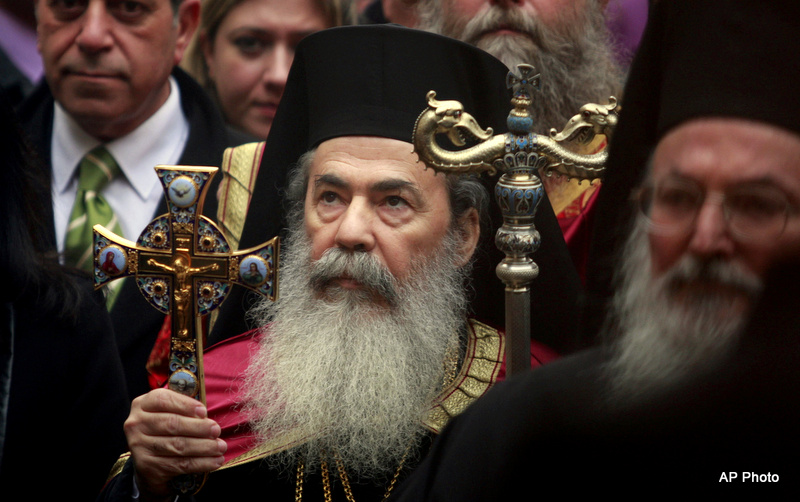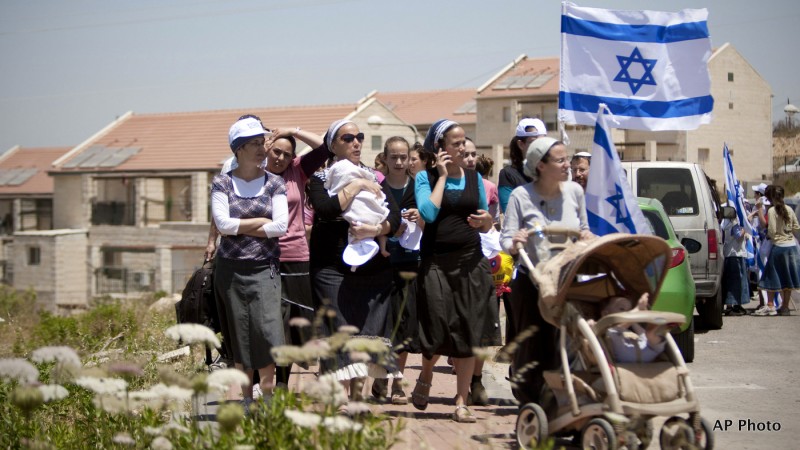OCCUPIED EAST JERUSALEM — Last month, Israel’s Nature and Parks Authority (INPA) announced plans to encompass Christian holy sites within a national park. Church leaders condemned the move as part of systematic efforts to drive Christians out of the Holy Land.
Following backlash, INPA withdrew the plan from the Jerusalem Municipality’s March agenda, saying it would instead have discussions with local churches on how to preserve the area. Yet the project is back on the municipality’s Local Planning and Construction Committee’s agenda, scheduled for Aug. 31. INPA did not respond to requests for comment on why this item was placed back on the municipality’s agenda.
The plan proposes expanding the Jerusalem Walls National Park, which surrounds the Old City, by about 25% and calls for taking over privately-owned Palestinain and Church-owned land, including some of the most sacred Christian sites. Originally, the proposal also included a Jewish cemetery, but it was left out when Jewish authorities managing the cemetery opposed the decision.
Following the plan’s announcement, Israeli peace and human rights organizations Bimkom – Planners For Planning Rights, Emek Shaveh, Ir Amim, and Peace Now said in a joint statement:
There is a direct link between what is happening in Sheikh Jarrah and the expansion plan. These are various mechanisms used by Israel in East Jerusalem to entrench its sovereignty, to marginalize non-Jewish presence and to prevent much needed development of Palestinian neighborhoods, thereby increasing the pressure to push them out of the Old City basin.
Church leaders also slammed the outlined expansion in a letter to Israel’s Minister of Environmental Protection:
This is a brutal measure that constitutes a direct and premeditated attack on the Christians in the Holy Land, on the churches and on their ancient, internationally guaranteed rights in the Holy City. Under the guise of protecting green spaces, the plan appears to serve an ideological agenda that denies the status and rights of Christians in Jerusalem.
The Jerusalem Walls National Park was established after Israel annexed East Jerusalem following the 1967 Six-Day War. Its declaration included the areas designated for expansion, but those efforts did not come to fruition — until now.
Israeli human rights organizations condemned expansion for restricting Palestinian building, while also stressing the park’s current state has significantly hindered Palestinian development.
Sari Kronish, the architect with Bimkom, said the Jerusalem Walls National Park contains several Palestinian neighborhoods, including Wadi-Hilweh and al-Hizbe. “It’s not just a ring around the Old City walls,” Kronish told MintPress News. “Both of these neighborhoods found themselves suddenly living inside a national park, which completely prevents their improvement and development and not to mention also brings heightened law enforcement.”
Palestinian neighborhoods are not the only community affected by the development of Israeli parks. Father Koryoun Baghdasaryan, chancellor of the Armenian Patriarchate of Jerusalem, told MintPress that since 1967, the Armenian Patriarchate has not received a permit to construct anything new in the Armenian Quarter of the Old City because the area is declared a green space.
“The idea of declaring [areas] national parks or green zones is to impose restrictions,” Baghdasaryan said, explaining how these restrictions have depleted the quarter’s commercial activity and economic growth. “Armenians bought these properties to secure the income for the patriarchate, the convent, to survive here,” Baghdasaryan continued. “Now there is no profit for us.”
Settlers taking over
In their letter to Israel’s environmental protection minister regarding the extension of the Jerusalem Walls National Park, church leaders wrote:
In recent years, we cannot help but feel that various entities are seeking to minimize, not to say eliminate, any non-Jewish characteristics of the Holy City by attempting to alter the status quo… [I]t seems that [the plan] was put forward and is being orchestrated, advanced and promoted by entities whose apparent sole purpose is to confiscate and nationalize one of the holiest sites to Christianity and alter its nature.
The churches are referring here to Israeli settler groups. More specifically, the settler associations Ir David Foundation (or El’ad) and Ateret Cohanim, which have been part of real estate and building operations in and around the Old City.
El’ad is most recognized for managing the City of David archeological site located in the Palestinian neighborhood of Silwan and near Al-Aqsa Mosque. In addition to spurring eviction lawsuits against Silwan residents, El’ad also conducts archaeological excavations beneath Silwan’s streets, damaging the structural foundations of many Palestinian homes. The organization is also involved in the construction of a pedestrian bridge cutting through the Old City.
“They’re trying to create a ring of settlement-related tourism attractions around the Old City,” said Talya Ezrahi, external relations coordinator at Emek Shaveh, an Israeli non-profit focused on archaeology. “Their objective is to transform the identity of the space around the Old City from one that is multicultural and multi-faith into one that has a Judeocentric narrative that justifies the settlements.”
Ateret Cohanim’s endeavors are slightly different. In the Christian Quarter of the Old City, the settler group purchased the Petra and New Imperial hotels from the Greek Orthodox Church in 2004 through a secret deal orchestrated by Nikolaos Papadimas, who was then responsible for the church’s properties. Papadimas disappeared following the $1.25 million sale. Now, the New Imperial Hotel’s Palestinian management is embroiled in a legal battle against their eviction after Israel’s Supreme Court ruled the deal was done in good faith in 2019.
The hotel is situated between the Catholic and Greek Orthodox churches and next to the Old City’s main entrance, Jaffa Gate. “If this is in the hands of this radical group, this will threaten the Christian presence on Jaffa Gate and in Jerusalem,” Walid Dajani, the hotel’s manager, told MintPress. His family has been running the hotel since 1949 and are protected tenants.
Archbishop Theodosios of Sebastia, from the Greek Orthodox Patriarchate of Jerusalem, explained lands owned by the Greek Orthodox church are part of a Christian waqf or trust, meaning they are not for sale. “These properties support the steadfastness of Christians,” Archbishop Theodosios said. “These deals are illegal and these properties shall remain in the ownership of the church.” The religious leader added the Christian waqf had been under threat prior to the establishment of the Israeli state. “It started even before 1948,” Archbishop Theodosios said. “There are so many lands that belonged to churches in western Jerusalem that have been confiscated and so many Israeli official institutions were then built on these lands.”
Ateret Cohanim declined to comment on the matter.
Attacks against Christians increasing

As land rights belonging to the Christian community are under threat, so too is their own safety.
Both Father Baghdasaryan and Archbishop Theodosios described how nearly anyone wearing a cross while walking through the Old City will experience verbal or physical assaults from Jewish extremists. “Once a person is identified as a Christian — doesn’t matter whether he is a clergyman, seminarian or a lay person — they [the settlers] just behave like they are not welcome here. They spit on them. They curse them,” Baghdasaryan said.
Armenian Christians are most susceptible to attacks, given the Armenian Quarter’s proximity to the Jewish Quarter. Last May, Armenian reverends Father Tiran Hakobyan and Father Arbak Sarukhanyan were beaten by a group of Israeli settlers while walking to the Church of the Holy Sepulchre from the Armenian Convent. Sarukhanyan was hospitalized for his injuries. “I have been in Jerusalem since 1995. [Attacks are] increasing yearly. In the past, there has never been any physical violence, but recently it’s becoming more and more common,” Baghdasaryan said.
Baghdasaryan has been spat on numerous times and Archbishop Theodosios has also been attacked when walking through the Old City. “Some of them are kids. They’re little children who spit, who verbally assault and who are treating religious people and elderly people in a very offensive way,” Archbishop Theodosios said. “These children are being raised on racism and hatred. They think that Jerusalem only belongs to them and not to any other people.”
But it’s not just physical violence that’s disturbing the Christian presence in Jerusalem. Archbishop Theodosios described how the municipality, together with settler groups, often organizes loud festivals during Jewish holidays in the Christian Quarter near the New Gate. “There will be music and dancing that is disrupting the area’s holiness and disrupting the daily lives of residents,” Archbishop Theodosios said. “It’s an attempt to change the dominant Christian atmosphere of that area.”
Erasing a community

Christianity was born in Palestine, but its population there is dwindling in numbers. In 2019, Jerusalem’s Palestinian Christian population was only 4% of the city’s demographic, with just under 5,000 residents in the Old City’s Christian Quarter.
Archbishop Theodosios believes strategic efforts are behind the city’s decreasing Christian numbers. Violence and land confiscation are part of a larger plan to empty Jerusalem of its Christian inhabitants.
“We are facing a very dangerous situation,” Archbishop Theodosios said, “wherein a few years we might find the holiest city for Christians without any local Christians, without any indigenous Christians.”



